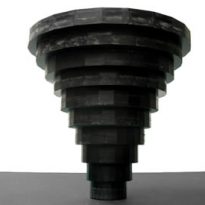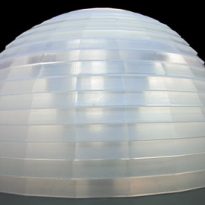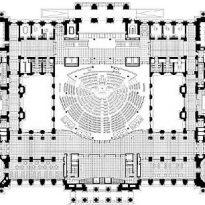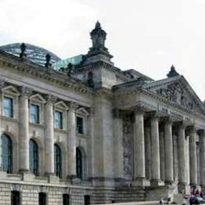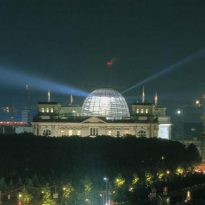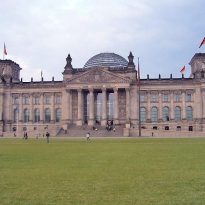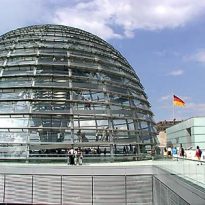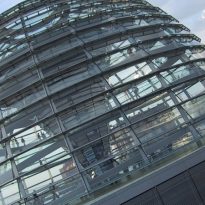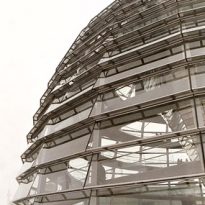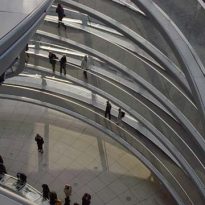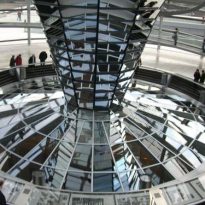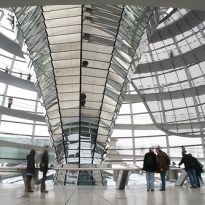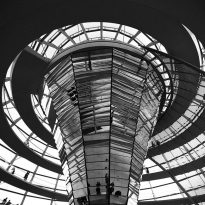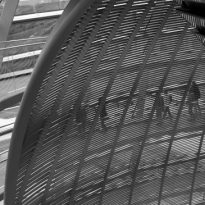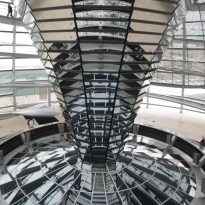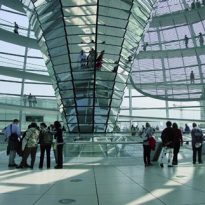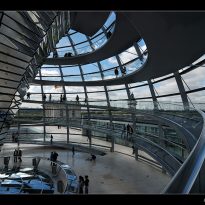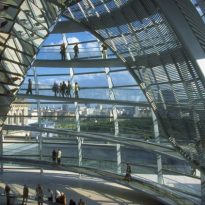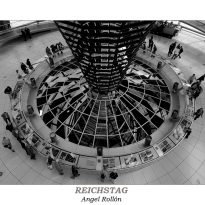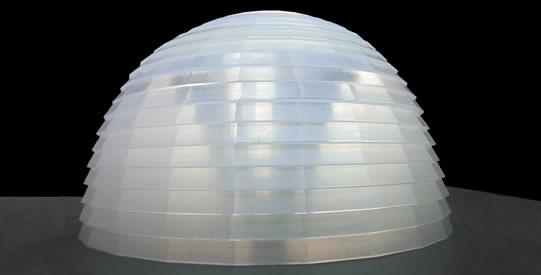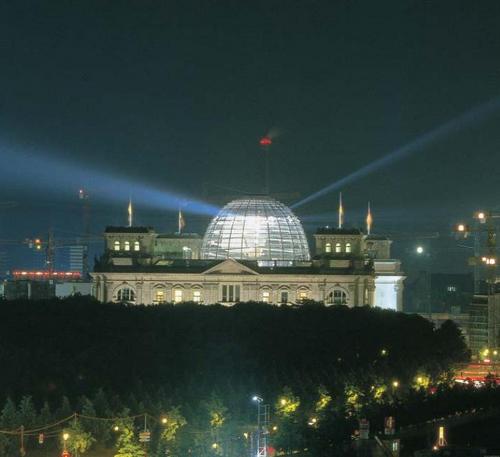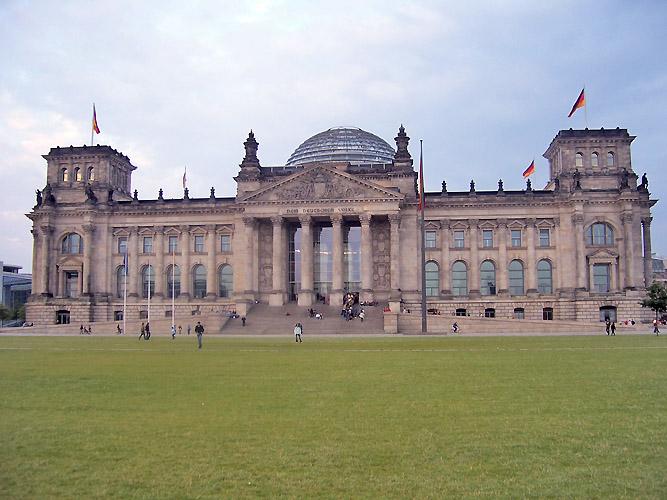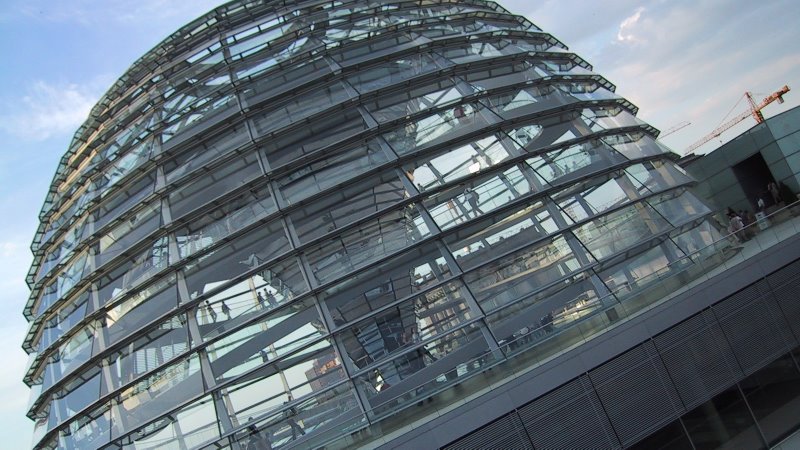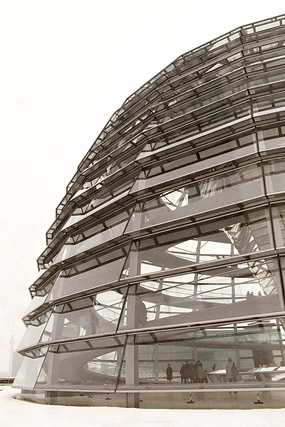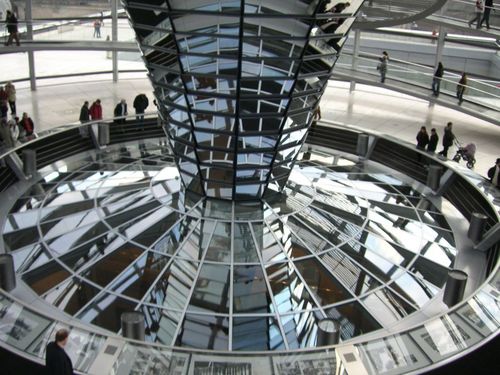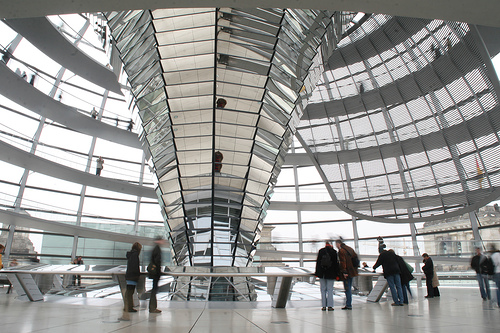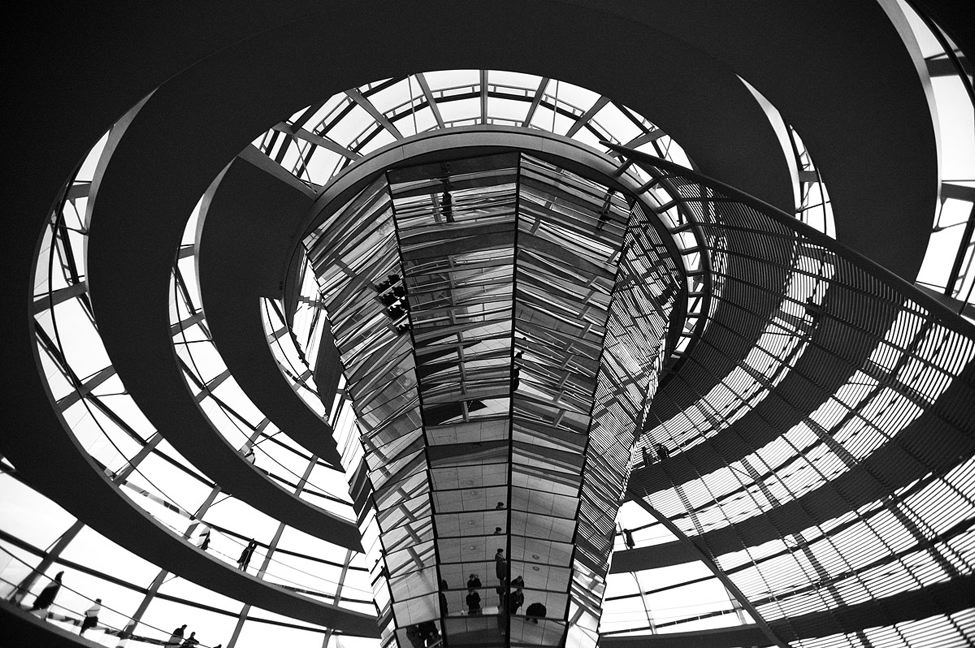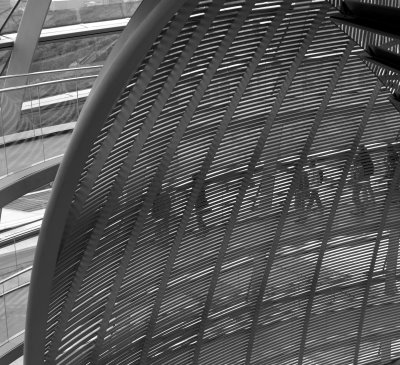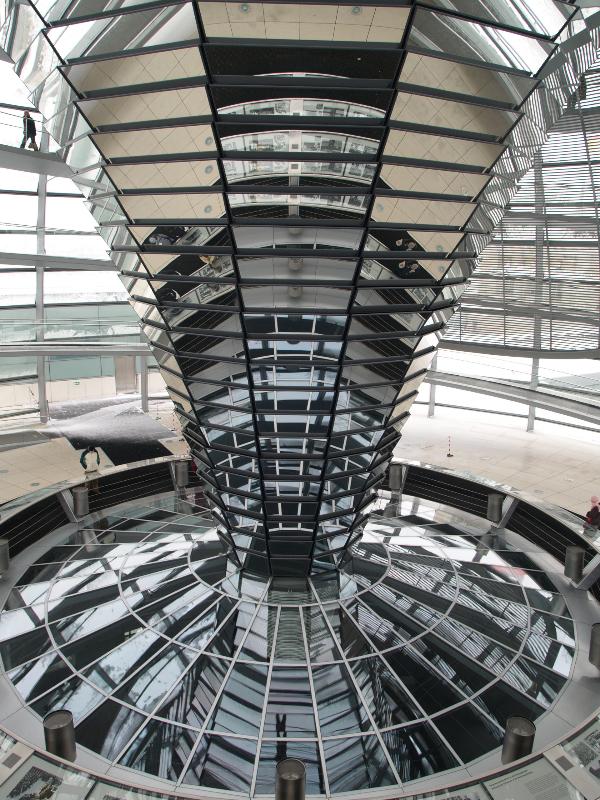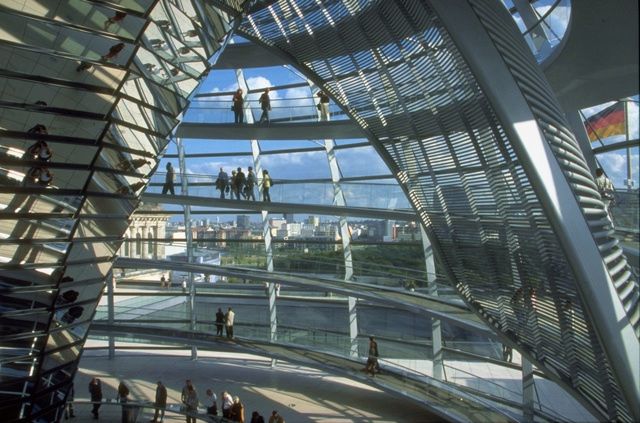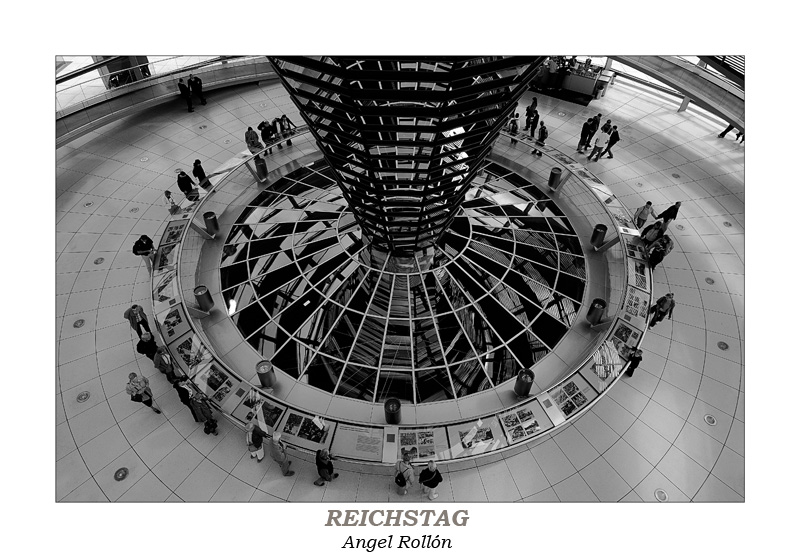Reichstag

Introduction
Following the decision to relocate the federal capital from Bonn to Berlin, were initiated various projects for the construction of new buildings to house the headquarters of the main institutions of the country’s work was more emblematic of the complete remodeling inside story building, the Reichstag (Parliament German) as well as the restoration of its facade and the construction of a dome with a new modern design, markedly different from the original.
It is one of the main symbols of the new Berlin, capable of communicating in a single glance, that communion between past and present that makes the German capital today to a laboratory for architecture and a true and proper exposure to opencast the dome Reichstag is the result of the ingenuity of Norman Foster, winner in 1993, the international convened with the aim of rebuilding the structure demolished in 1954.
While the dome had been completely destroyed, the walls of the Reichstag had remained standing but heavily damaged.
Intervention by the London architect, responsible for providing new functionality to the entire structure, has been based on a number of points that can be summarized thus: transparency, respect for history and protection of the environment.
Situation
The building is located in the historic center of Berlin near the Brandenburg Gate, Potsdamer Platz and Tiergarten.
Concept
The principle has been inspiring, in fact, do more publicly accessible government action; of here, the choice of creating a single entry for the public and politicians, and predispose, on the first floor, a wall Glass, with direct view to the halls of parliament.
Along with the relationship with the existing building, Foster has chosen to retain some traces of the past, that emerged during the demolition work and leave visible the relationship between new and old, respecting the installation of the original structure.
Completely different from the previous shift is in the new dome, a futuristic structure of glass and steel, inside which two tranches helical lead to an observation area, right in line with the Plenary Hall.
Spaces
The building has a main hall, 30 meters high, transparent and functional. From the Republic Square can see the west gate of the building. This is the entrance for visitors, that if they’re not registered, they come directly to the terrace offering a panoramic view over the surrounding buildings and access to the dome.
After the glass walls of the hall is located west from where you can see the floor.
Nearby, on the north side were erected three buildings complementary, completing what is known as the parliamentary complex.
The dome
Upon entering one has the impression of being in a winter garden, whose effects of light and transparency are exacerbated by the inverted cone that lies at its center and is completely covered by 360 mirrors inclined.
By day the mirrors reflect the natural light, illuminating the Plenary Hall, at night, however, there is a reverse process: always thanks to the mirrors, the artificial light of the Chamber is reflected externally, illuminating the dome. The latter becomes, therefore, in a sort of torch, which can be watching you know if parliament is in session.
The dome also plays an important role in the ventilation system, as it draws hot air upward, while the fans recycle energy from the waste air. The dome is therefore not only a distinctive element of the architectural composition, but also an important device of power and lighting.
Structure
Supported by 12 columns of reinforced concrete, the structure has a diameter of 40 meters, a height of 23.5 meters and a total weight of 1,200 tons. The trunk of cone, which makes “light sculpture” has a lower base of 2.5 meters, while the top measured 16 meters. This endowed, in addition, a mobile screen that moves to prevent the penetration of heat and direct sunlight.
